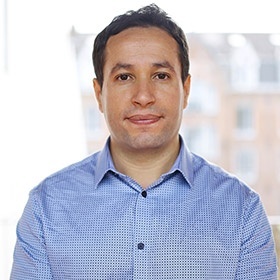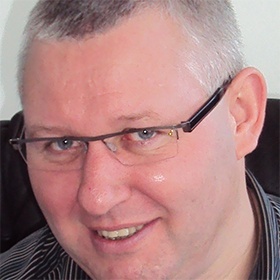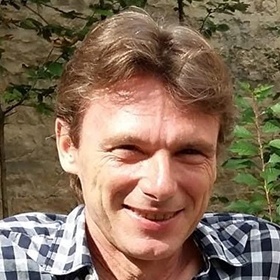Intersections
The 4 intersections of the Charles Viollette Institute:
-
Intersection
1 -
Intersection
2 -
Intersection
3 -
Intersection
4
-
Intersection 1
Biocontrol
-

Ali Siah,
Coordinator for ICV
As part of the current agroecology transition initiated in Europe but also in several regions around the world, the search for alternative control methods, aimed at reducing the dependence of agricultural production systems on chemical synthetic pesticides, is strongly encouraged. To face this major challenge, biocontrol is one of the most promising levers for bio-protecting crops against bio-pests and guaranteeing quality and sufficient production in quantity.
Biocontrol compounds can be living microorganisms (beneficial bacteria or fungi), plant or microbial extracts or metabolites, or even bio-sourced compounds from biomass transformation co-products. They act by direct antimicrobial activity or indirectly by activating the defense mechanisms of the plant (plant defense stimulators, also called resistance inducers).
Biocontrol is an important and cross-cutting theme within the BioEcoAgro Cross-border UMR, researched by a variety of approaches. The originality of the unit lies in the complete and unique value chain at its disposal, ranging from in silico prediction to field validation tests. More concretely, the work aims to:
- Predict, identify and determine the production potential of new biocontrol compounds using bioinformatics tools
- Characterize, orient and model the biosynthetic pathways of these compounds using digital tools and genetic and metabolic engineering
- Check the biological activities (protective efficacy), the safety (toxicological and ecotoxicological study) and the modes of action of the compounds on pathosystems (plant-pest) of economic and agronomic interest
- Validate the efficacy of the compounds in the field and their compatibility with low chemical input culture systems
- Optimizing the formulation and production of the compounds on a large scale in order to prepare their potential industrial use and placing on the market. -
-
Intersection 2
Biopreservation
-

Thierry Grard,
Animateur pour l'ICV
-
-
Intersection 3
Green biological and separative processes
-

Pascal Dhulster,
Coordinator for ICV
The transversal axis “Green biological and separative processes” aims to federate the members of various teams of the cross-border UMR, who within the framework of their research activities develop concepts of process engineering applied to biological systems. This is about doing systemic research in biotechnological and food bioprocessing.
Thus, the transversal axis “Green biological and separative processes” aims to ensure the scientific animation of the UMR in process engineering and to affirm as a priority fundamental research in bioprocesses and separative processes, in intensification of bioprocesses through coupling using LCA and energy consumption to assess the environmental impact. It is about designing new eco processes for the production of natural molecules respectful of the environment and health in the context of the factory of the future. Teams 4, 5, 6 and 7 have long been involved in a logic of development and optimization of processes allowing the bioproduction of molecules by enzymatic catalysis, by fermentation, from plants and the extraction and purification of these active ingredients. Given the diversification of resources and molecules produced, it is necessary to address the problems by a systemic analysis of the processes in this transversality which ultimately is the framework of the structure that is the INRAE BioEcoAgro UMRT. The integration of these process concepts is taken into account very early on in all of the unit's teams and its great originality lies in the complete and unique value chain at its disposal, allowing it:
- To design and develop bioproduction processes on a millimeter and milliliter scale and to study the scaling up and its modeling through pilot steps to 100 liters to lead to demonstrators of 2000 liters.
- To set up improvement and innovation strategies in the separation processes allowing the obtaining of fraction or target molecules from complex production medium.
- To design new eco-processes and favor the intensification of processes by coupling the bioreaction to separation or integration.
- To control the environmental and energy impact as well as the cost and productivity throughout the chain.
- To manufacture batches of biomolecules of sufficient size to validate their use on a large scale while preserving their biological activity and maintaining their status as natural molecules.
- To study the formulation and stability of the product upstream of its applicability.
This transversal approach combining the concepts of process engineering and biological engineering has made it possible to be structuring and driving force for the associated international laboratory “LIAAN” created with INAF at Laval University. The teaching researchers of this transversality are members and active of the European Society of Biochemical Engineering Sciences, of the FF Biotech (member of the board), of the SFGP by co-animating two WGs: Bioprocesses and separation processes, of ADEBIOTECH (1 seat at the CA), CFM, IAR cluster by co-hosting the “enzymatic catalysis and associated processes” WG and SFR Condorcet. -
-
Intersection 4
Valorization of agro-resources
-

Vincent Phalip,
Coordinator for the ICV
The transversal axis "Valorization of Agroressources" aims to federate the members of various teams of the cross-border UMR, who have a research activity in the field of Bioeconomy in the broad sense with its repercussions on the economic, societal and environmental level.
The Bioeconomy strategy aims in particular at increased and sustainable mobilization of agro-resources in order to guarantee food and non-food needs, while respecting Biodiversity and the Environment. The development of agro-resources concerns the use of dedicated crops (the case of Miscanthus), agricultural by-products intended for food (straws, stalks, bagasse, etc.) but also the co-products of the agro-food industries (marc, sludge, grains ...). The objective is to generate biomolecules from these secondary raw materials, and therefore create added value while reducing dependence on fossil resources.
Many of the research activities developed within the cross-border UMR are concerned with this theme. We are indeed developing innovative agrosystems, studying the response of plants to the environment (production of bioresources). Other teams are interested in obtaining and characterizing active biomolecules or enzymatic activities (Biotechnological approaches to Bioeconomics). Finally, some of these biomolecules may have applications in the cosmetics and health sectors, which we are capable of understanding (activity and possible toxicity). -
